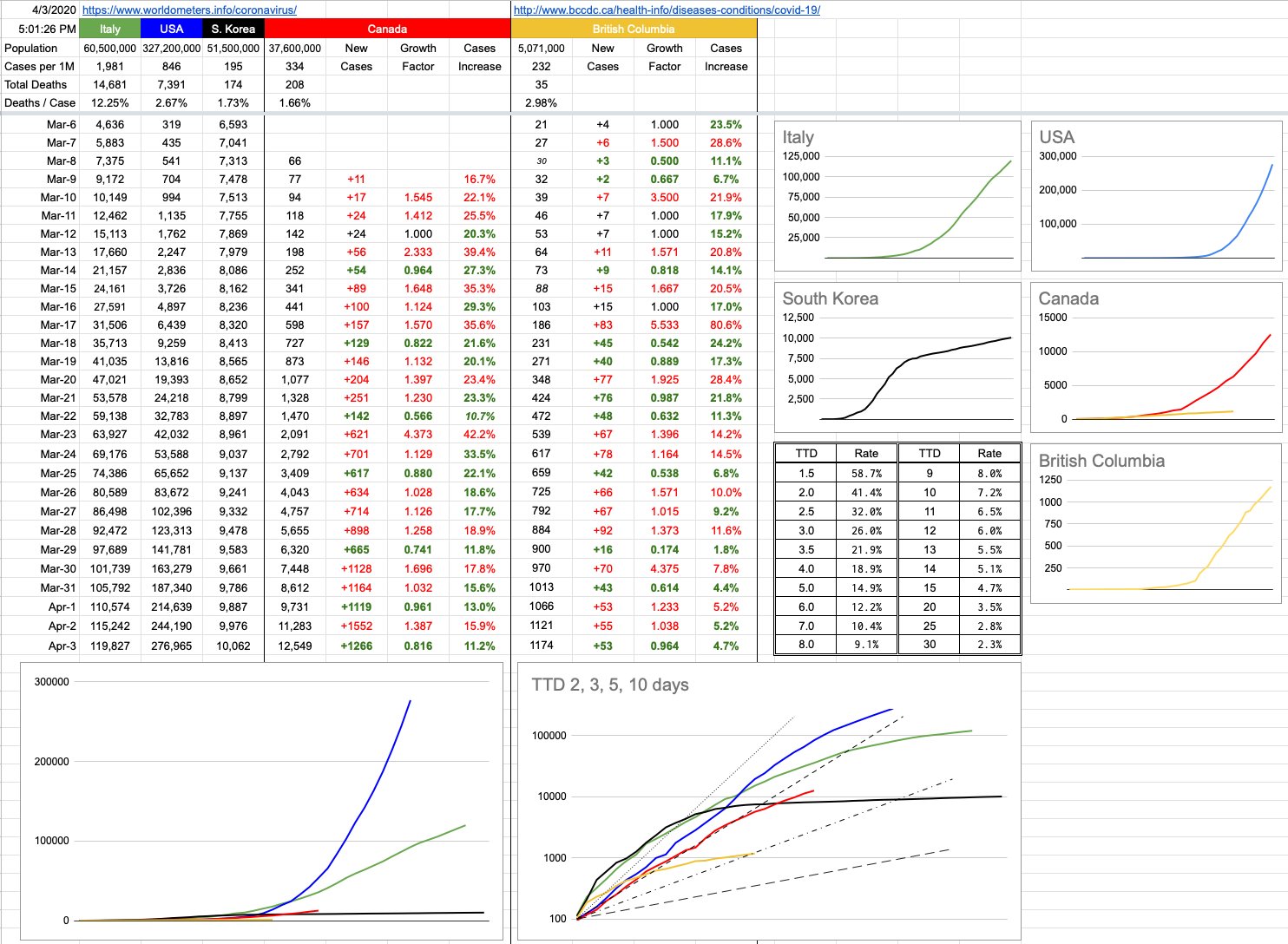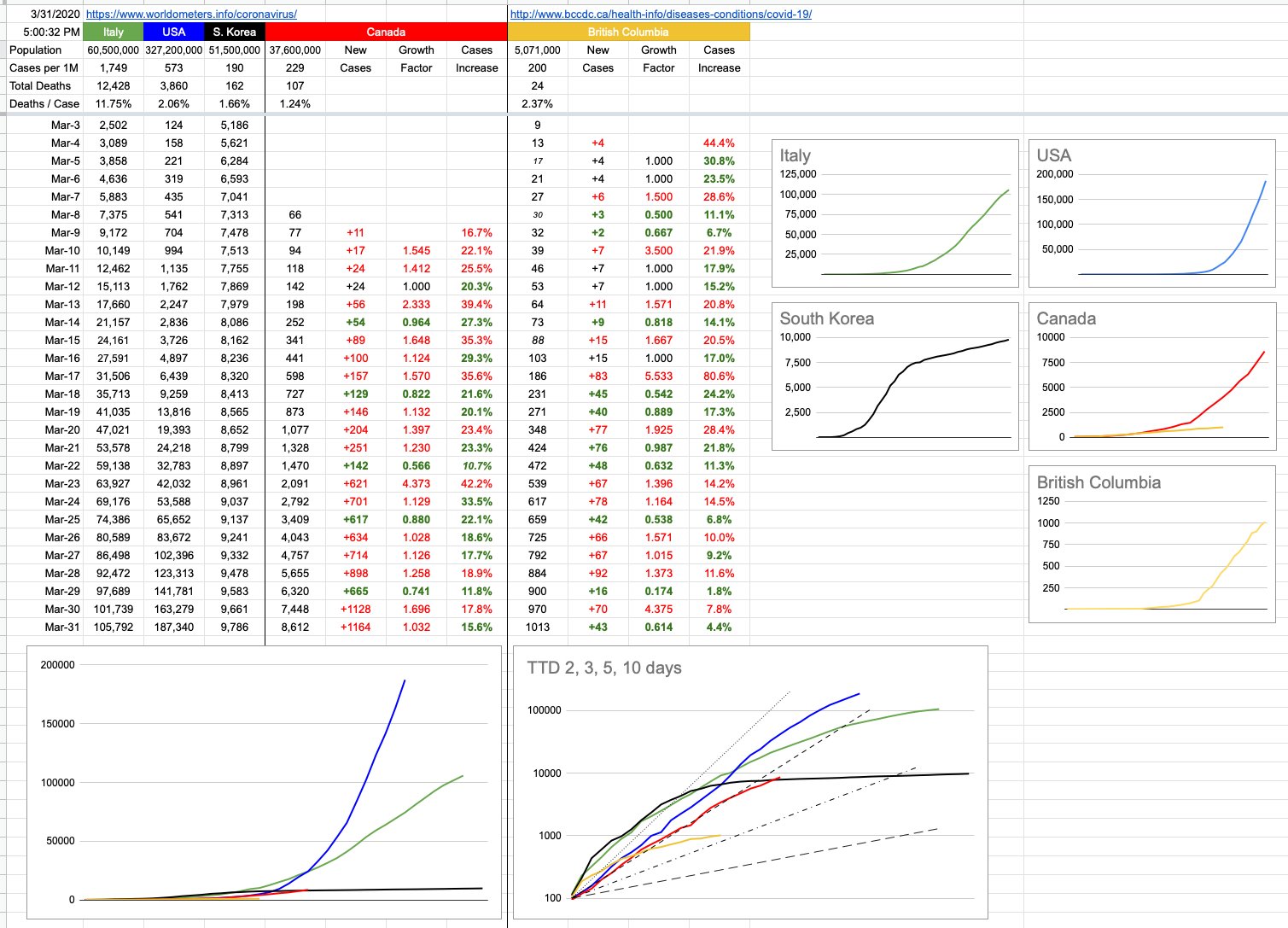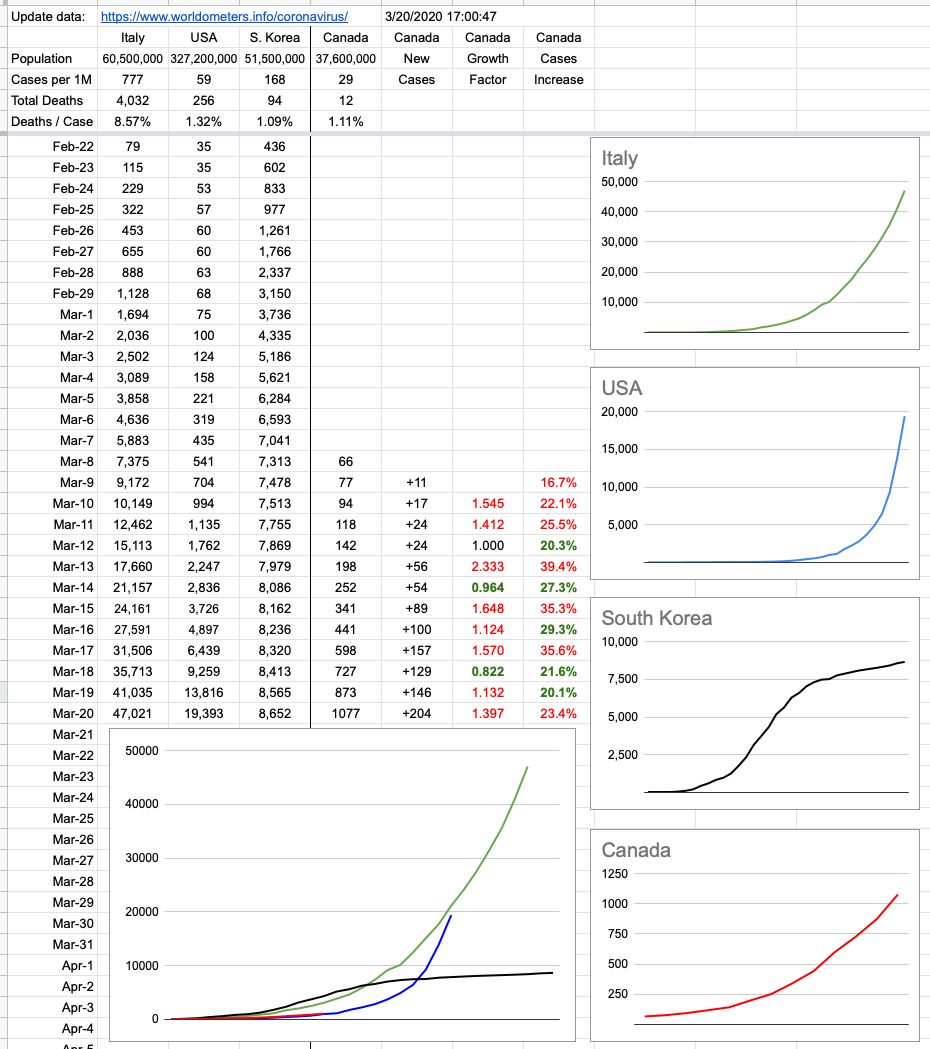Day 20 – April 5, 2020
When the historians who will ultimately document the great pandemic of 2020 begin their work, they will be asking themselves some tough rhetorical questions, many of which will begin with the words, “I wonder why they didn’t….” Indeed, some of those questions are being asked today, in the present tense, and good answers are not forthcoming. When those historians finish their books, most of them will have a chapter titled, “The United States of America”. Often, underneath the chapter name, there is a chapter subtitle… sometimes a little more detail, sometimes a quote. Usually in italics… you know what I mean. This particular subtitle will say:
“I don’t take responsibility at all” — President Donald J. Trump, March 13, 2020
Today is Sunday, “silent day” here in B.C., where the people upon whose words our futures (near and far) may depend, take a well-deserved break. Indeed, as loud as it gets at 7pm every night around here… it gets just as quiet at 3pm on weekdays when the only words you might hear are, “Shut up — Dr. Henry is speaking”. Today is their day off, so my B.C. number is just a guess bases on the averages of last week — I will fix it tomorrow when we get real data. But I’m guessing it’s pretty close.
Until recently, none of us had even heard of Dr. Bonnie Henry… but now, we all want to adopt her. And it’s not just the calm, soothing voice of reason that’s so enchanting… it’s the actual substance of what she’s saying. She’s not making it up as she goes along. She’s not up there to make herself look good. She’s not up there incoherently throwing blame around. She’s surrounded herself with excellent people who she consults on a continual basis. She’s not afraid to admit she was wrong, and, accordingly, she’s willing to course correct… which, if you read back on the evolution of this emerging pandemic in B.C., has happened more than once. She is, in every sense of the word, a leader.
On the day Donald Trump spoke those words, there were 2,300 known cases of COVID-19 in the USA. By that point, Italy was well aware they had a serious problem on their hands. They were at close to 20,000 cases and growing quickly, and they had begun throwing the proverbial kitchen sink at it in every feasible way. Pandora was out of the box, and the trajectory was not looking good. Everybody was paying attention, and everyone was making plans.
In Canada, on that day, there were 198 known cases, 64 of which were in B.C. If we were to map our growth rates to match what’s happened in the U.S., Canada would presently have 29,500 cases (we’re at 15,500) and B.C. would have 9,500 (we’re at 1,250 or so). And Italy, had they continued that same trajectory, would presently be looking at 26,300,000 — an unlikely number for other reasons, but that’s what the math implies if you leave this thing alone to propagate unchecked in an environment that could support that growth.
On March 13th, here in B.C., the only orders that were In place were that travellers returning need to self-isolate for 14 days, and that all gatherings of more than 250 people should be cancelled. Physical distancing as we know it today had not yet been implemented. And as we all know, a lot has changed since then… here, at least… not the least of which are the social distancing orders.
There are places in the U.S. at this moment where none of these sorts of orders are in place, and if they are, they are not being taken seriously or enforced. It boggles the mind to think that while we’re having a quiet Sunday here, there is a church in Louisiana where today 26 busloads of people arrived for services. People want to start talking about how we emerge from this, and it’s a complicated question because the world is a complicated place, where lots of different things are going on in lots of different places. The answer to how and when B.C. emerges from this will likely be very different than Louisiana.
B.C. has a population of 5 million. Louisiana has a similar population of 4.7 million.
On March 13th, B.C. had 64 cases. Louisiana had 77.
Today, we have 1,250 cases. Louisiana has 9,150.
What a difference real leadership can make.






